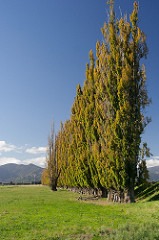
GM/Biotech Crops Report – March 2018
2nd March 2018- GM/Biotech Crops Monthly Reports (BELOW) form part of BCPC’s free three-tier Biotech Crops Info service.
- This service also includes a weekly round-up of news from around the globe – see BCPC Newslink GM Crops section.
- Plus – Free access database on over 300 GM/biotech products covering 23 crops in the global market visit BCPC’s GM/Biotech Crops Manual – Register here for free access.
Already registered? Click here
GM/Biotech Crops Monthly Report March 2018
 |
A vaccine for cancer Researchers at Stamford University have taken blood or skin cells from mice and re-programmed them to mimic embryonic stem cells. When these cells are injected back into the body that they came from, they train the immune system to identify cancers and tumours of breast, lung and skin cancers failed to develop. The next step is to move the technique on to testing against actual human cancers. More Pic Steph Hillier |
|---|---|
| Glyphosate-tolerant cassava
A team at Minnesota University have used CRISPR-Cas9 editing to create a strain of cassava that is tolerant of glyphosate. Under the proposed new EU ruling that edited plants are not to be subject to GM legislation, this could be a way of introducing the benefits of herbicide-tolerant crops to Europe. More Pic Source: IITA |
 |
 |
Powdery mildew resistance in wheat
The Pm3 gene in wheat causes resistance to powdery mildew but quickly loses its effectiveness but doubling up the Pm3 phenotypes by cross-breeding transgenic lines leads to better powdery mildew resistance with no negative effects on development or yields. More |
| DNA ‘Black Matter’ still important
Sections of DNA that do not appear to code for protein formation have been classed as ‘Dark Matter’ because the function of these sections is unknown but are common across different vertebrate species so are not random. Now a collaborative effort has found that they are are important in fine-tuning the expression of genes that do form proteins. This knowledge could lead to greater understanding of the causes of neurological illnesses such as Alzheimer’s. More Pic Source: Andrey Manoylov |
 |
 |
Frost and drought-tolerant potatoes?
The wild potato Solanum commersonii is much more tolerant of both drought and frost than the S. tuberosum that we grow as the potato crop. Researchers at Shangdong Agricultural University have identified the genes involved and have expressed them in Arabidopsis. The next step will be to get them in to commercial varieties of potatoes. More |
| Rice genes in maize
Over the last three year researchers at Rothamsted have determined how the introduction of a rice gene into maize has increased yields. It increases sucrose transport which prevents some grain sites from aborting due to drought and increases the amount of photosynthesis. It is thought that this technique might also work in other crops such as wheat. More |
 |
 |
Gene for Septoria resistance in wheat
A team at Rothamsted have now sequenced a gene in wheat that has been known about for 20 years and which confers resistance to Septoria leaf blotch. It is hoped that this will lead to other genes which will widen the scope of the resistance developed. More |
| Chrysanthemums that taste bad to aphids
Collaboration between Wageningen and a Chinese University has discovered that over-expression of the TcCHS gene in chrysanthemums reduced aphid probing activity on transformed plants. Could it be that they simply taste bad? More Source: John Flannery |
 |
 |
A poplar way to improve biofuels
A gene found in poplar trees produces plants that have lower pectin content and are therefore more easily digestible in biomass plants. Reducing the expression of the GAUT4 gene led to a 70% reduction in pectin and a 15% increase in sugars in switchgrass. More Source: Phil Norton |
| . |
| The launch of Green Super Rice
The Bill Gates Foundation and the International Rice Research Institute have developed what they call Green Super Rice that is more tolerant of drought and require less fertiliser for optimum yield. Varieties are currently completing national list trials and will be available to grow in Asia and Africa soon. More Source:Jules Antonio |
. |
 |
Sorghum yields improved
Normally the terminal spike of sorghum has both filled and sessile grain sites but the Cold Spring Harbour Lab in New York has discovered a mutation that causes all grain sites to fill. The team involved now hope to achieve the same trick in wheat, maize and rice. More Pic Source: Michaela Lohelt |
THE LATEST ADDITIONS TO THE GM/BIOTECH DATABASE ARE:
- E12 – Russet Burbank potato with reduced acrylamide potential and reduced blackspot formation approved for food and feed use in Malaysia.
- COT102 – cotton with Lepidopteran insect resistance approved for feed and cultivation use as well as food use in Australia and for seed production only in Costa Rica.
- DHA Canola – New Transformation Event of oilseed rape with tolerance of glufosinate and altered omega-3 oil content approved for commercial cultivation in Australia.
- MS11 – oilseed rape with tolerance of glufosinate approved for commercial cultivation in Canada.
- ArcticTM Fuji apple approved for commercial cultivation in Canada.
FOR INSTANT ACCESS TO GM BIOTECH MANUAL CLICK HERE (Registration required)
Already Registered? Click here to access

